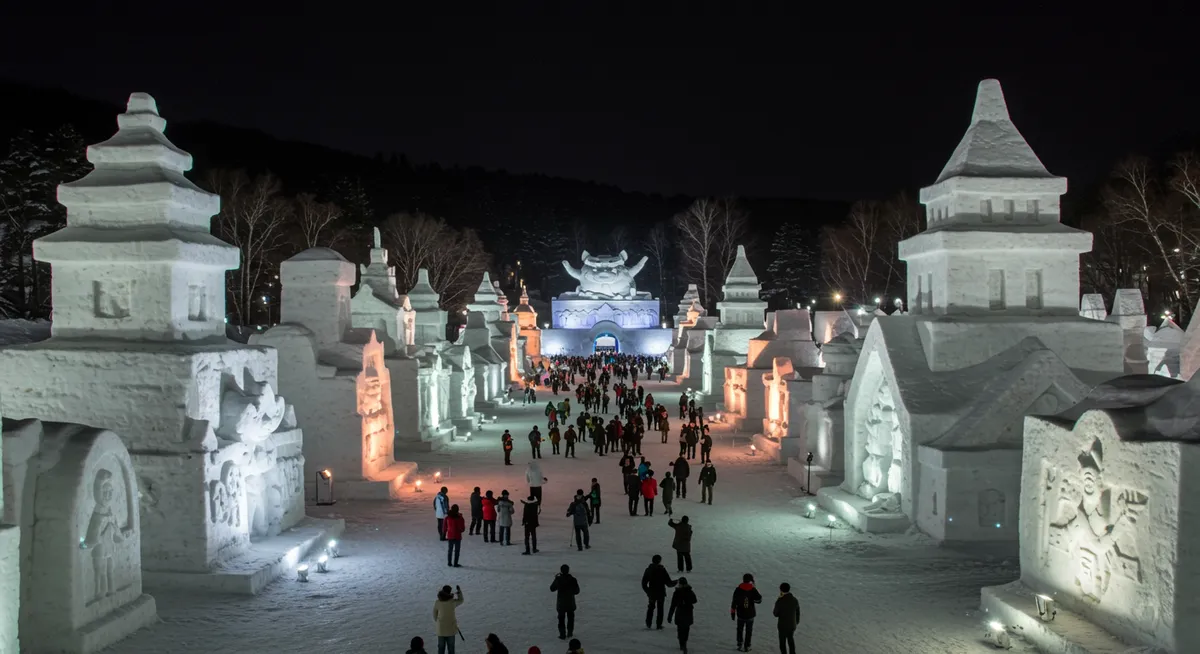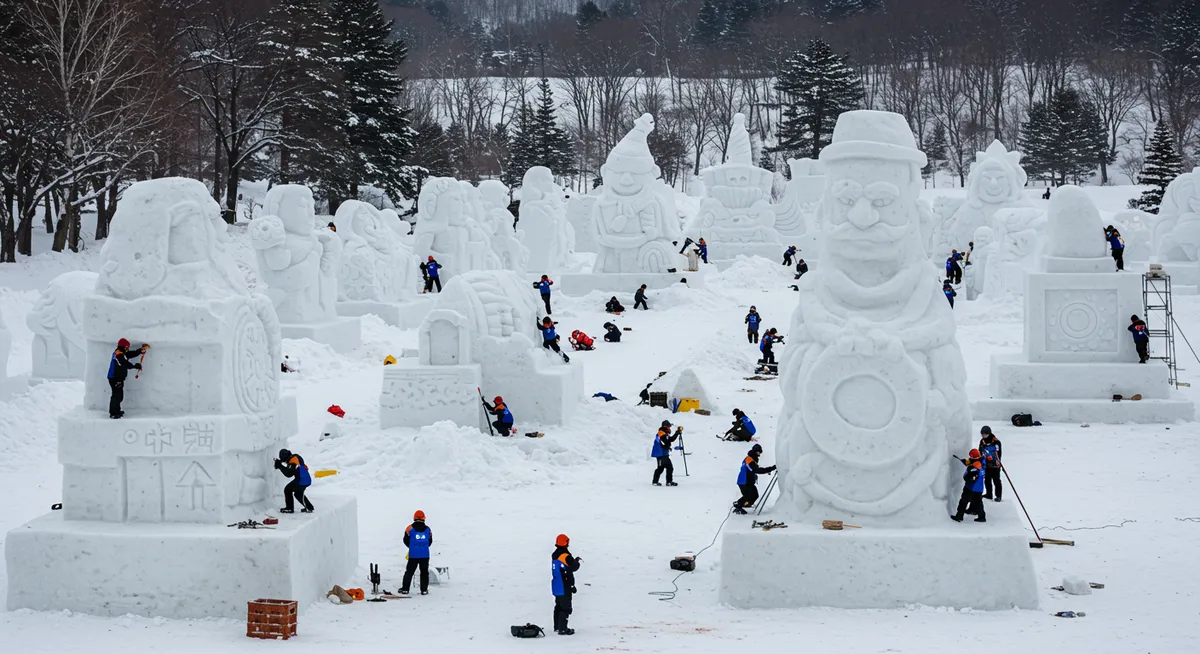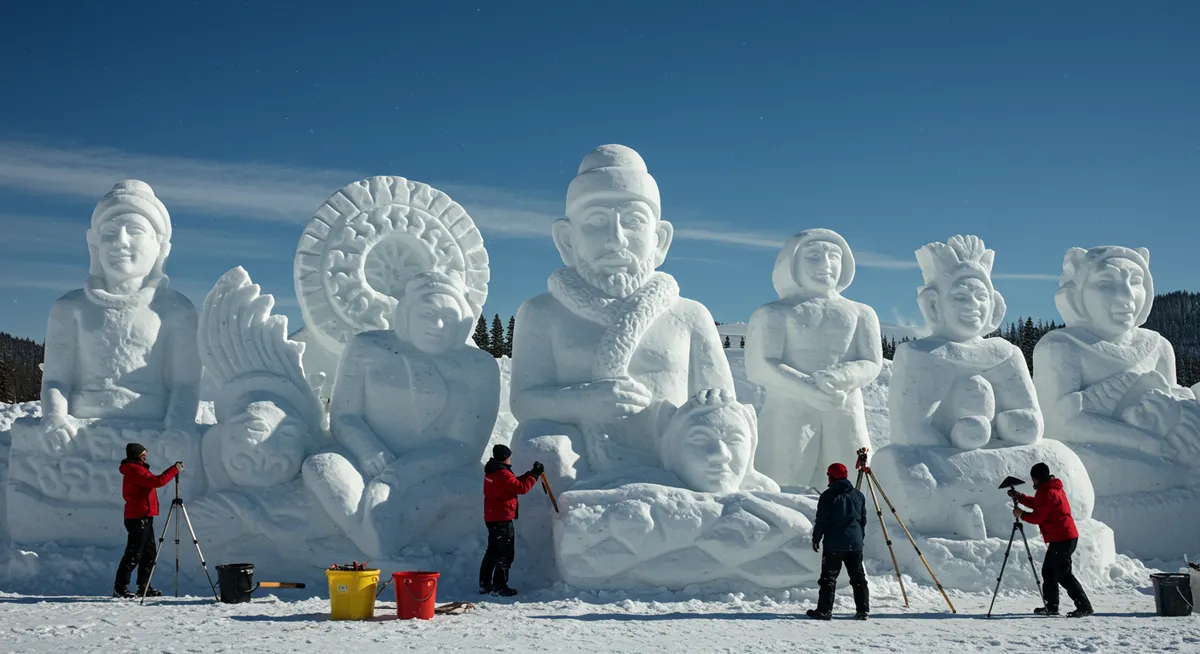Sapporo Snow Festival Guide | Japan's Winter Wonderland of Ice Sculptures

Sapporo Snow Festival: Japan's Spectacular Winter Celebration
Each February, Japan's northern island of Hokkaido transforms its capital city into a winter wonderland during the internationally acclaimed Sapporo Snow Festival (札幌雪まつり - Sapporo Yuki Matsuri). What began in 1950 as a small local event featuring six snow sculptures created by high school students has evolved into one of the world's most impressive winter festivals, attracting over 2 million visitors annually. For seven magical days, Sapporo's parks and main thoroughfares showcase hundreds of intricate snow and ice sculptures, creating an ephemeral outdoor museum that celebrates winter's creative possibilities. This guide explores the festival's highlights, history, and practical information for experiencing this extraordinary celebration of snow and ice artistry.

The Evolution of Sapporo's Winter Celebration
The Sapporo Snow Festival has grown from humble origins to international prominence:
- Origins (1950): Six snow statues built by local high school students in Odori Park
- International Recognition (1972): The Winter Olympics in Sapporo brought global attention to the festival
- Growth and Expansion: From a single venue to multiple sites across the city
- Modern Era: International snow sculpture competition, corporate sponsorships, and integration of advanced technology
Festival Locations and Highlights
The modern festival spans three primary sites, each offering distinctive experiences:
Odori Park Site
The festival's main venue stretches across twelve city blocks in downtown Sapporo:
- Monumental Sculptures: Massive snow recreations of famous buildings, characters, and historical scenes
- International Contest: Teams from around the world compete to create the most impressive sculptures
- Night Illuminations: Dramatic lighting transforms sculptures after dark with projection mapping
- Hokkaido Food Plaza: Regional culinary specialties served in outdoor food stalls
- Stage Performances: Live music, traditional arts, and contemporary performances

Susukino Site
Sapporo's entertainment district hosts a unique ice sculpture exhibition:
- Crystal-Clear Sculptures: Around 100 delicate ice (rather than snow) sculptures line the main street
- Ice Bar: Popular attraction serving drinks in glasses made of ice
- Interactive Displays: Sculptures incorporating lighting effects and occasionally interactive elements
- Ice Sculpture Contest: Competition focusing on technical skill and artistic refinement
Tsudome Site
The family-friendly venue offers participatory winter activities:
- Snow Slides: Massive snow slides for children and adults
- Snow Rafting: Guided rafting experiences through snow courses
- Snowman Building Area: Designated spaces for visitors to create their own snow art
- Indoor Rest Area: Warm facilities with food vendors and regional products
The Art of Snow Sculpture
Creating the festival's centerpiece attractions requires extraordinary planning and execution:
- Construction Process: Wooden frames filled with packed snow form the base structure for large sculptures
- Artistic Teams: Japan Self-Defense Forces members traditionally help create the largest sculptures
- Specialized Tools: Chisels, ice picks, and increasingly sophisticated tools shape the sculptures
- Preservation Challenges: Artists must account for temperature fluctuations affecting their creations
- Technological Integration: Modern sculptures often incorporate lighting, sound, and projection elements

International Snow Sculpture Contest
A highlight of the festival is the international competition that draws teams from around the world:
- Participating Nations: Countries from across Asia, Europe, North America, and beyond send teams
- Contest Rules: Teams receive identical 3x3x3 meter snow blocks and have four days to complete their work
- Judging Criteria: Artistic merit, technical difficulty, and theme expression determine winners
- Cultural Exchange: The contest creates opportunities for international cultural sharing beyond the sculptures
Festival Themes and Motifs
The sculptures reflect both traditional Japanese culture and international influences:
- Architectural Recreations: Famous buildings and landmarks from Japan and worldwide
- Pop Culture: Characters from anime, manga, films, and video games
- Historical Scenes: Japanese historical events and folklore
- Natural Motifs: Animals, landscapes, and mythical creatures
- Contemporary Art: Abstract and conceptual pieces exploring modern themes
Planning Your Festival Visit
Making the most of the Sapporo Snow Festival requires careful planning:
Getting to Sapporo
Hokkaido's capital is accessible through several transportation options:
- Air Travel: New Chitose Airport offers domestic connections from major Japanese cities and international flights
- Train: The Hokkaido Shinkansen connects to southern Hokkaido, with transfers to Sapporo
- Within Sapporo: Efficient subway system connects all festival sites
Accommodation Strategies
The festival period represents peak tourism season requiring advance planning:
- Early Booking Essential: Reserve accommodations 6-12 months in advance
- Location Options: Downtown hotels provide convenience but book quickly; consider outlying areas with subway access
- Traditional Experience: Some visitors opt for ryokan (traditional inns) in nearby hot spring towns
- Alternative Timing: Consider visiting just before the official opening when sculptures are complete but crowds smaller
Weather Considerations
Sapporo's February weather demands proper preparation:
- Average Temperatures: Typically between -1°C to -7°C (30°F to 19°F)
- Appropriate Clothing: Thermal layers, waterproof footwear, heavy coat, gloves, scarf, and hat essential
- Indoor Respites: Plan regular warming breaks in cafes, restaurants, or department stores
- Evening Essentials: Extra layers for night viewing when temperatures drop further
Beyond the Snow Festival
Visitors to Sapporo during festival season can explore additional attractions:
- Otaru Snow Light Path: Nearby city's atmospheric canal lined with snow lanterns and sculptures
- Sapporo Winter Sports: World-class skiing and snowboarding at nearby resorts
- Hot Spring Experiences: Relaxing onsen (hot spring) baths popular after cold festival viewing
- Hokkaido Cuisine: Seafood, soup curry, genghis khan (lamb barbecue), and dairy products
- Sapporo Beer Museum: Tour and tastings at a local institution
Planning your Sapporo Snow Festival visit?
The festival typically runs for seven days in early February. Check the official website for exact dates as they vary slightly each year.
For the best experience, visit Odori Park both during daylight (to appreciate details) and after dark (for illuminations). Allow at least two full days to properly experience all three sites.
Explore Related Asian Winter Festivals
If you're enchanted by the Sapporo Snow Festival, consider these other remarkable winter celebrations across Asia:
Harbin Ice Festival
China's spectacular ice city with massive illuminated ice buildings and sculptures.
Wakakusa Yamayaki
Japan's ancient mountain-burning festival with spectacular fireworks in Nara.
Dongzhi Festival
East Asian winter solstice celebration with special foods and family gathering.
Lunar New Year
East Asia's most important celebration often occurring during winter months.
Thaipusam
Tamil Hindu festival with devotional processions and rituals of faith.
Yamagata Snow Monsters
Natural phenomenon of snow-covered trees creating mythical "monster" shapes in winter.
Experience the magic of winter festivals across Asia, from the crystalline sculptures of Harbin's Ice Festival to the traditional mountain burning at Wakakusa Yamayaki. Explore how different cultures celebrate the winter season through art, light, and community gatherings.